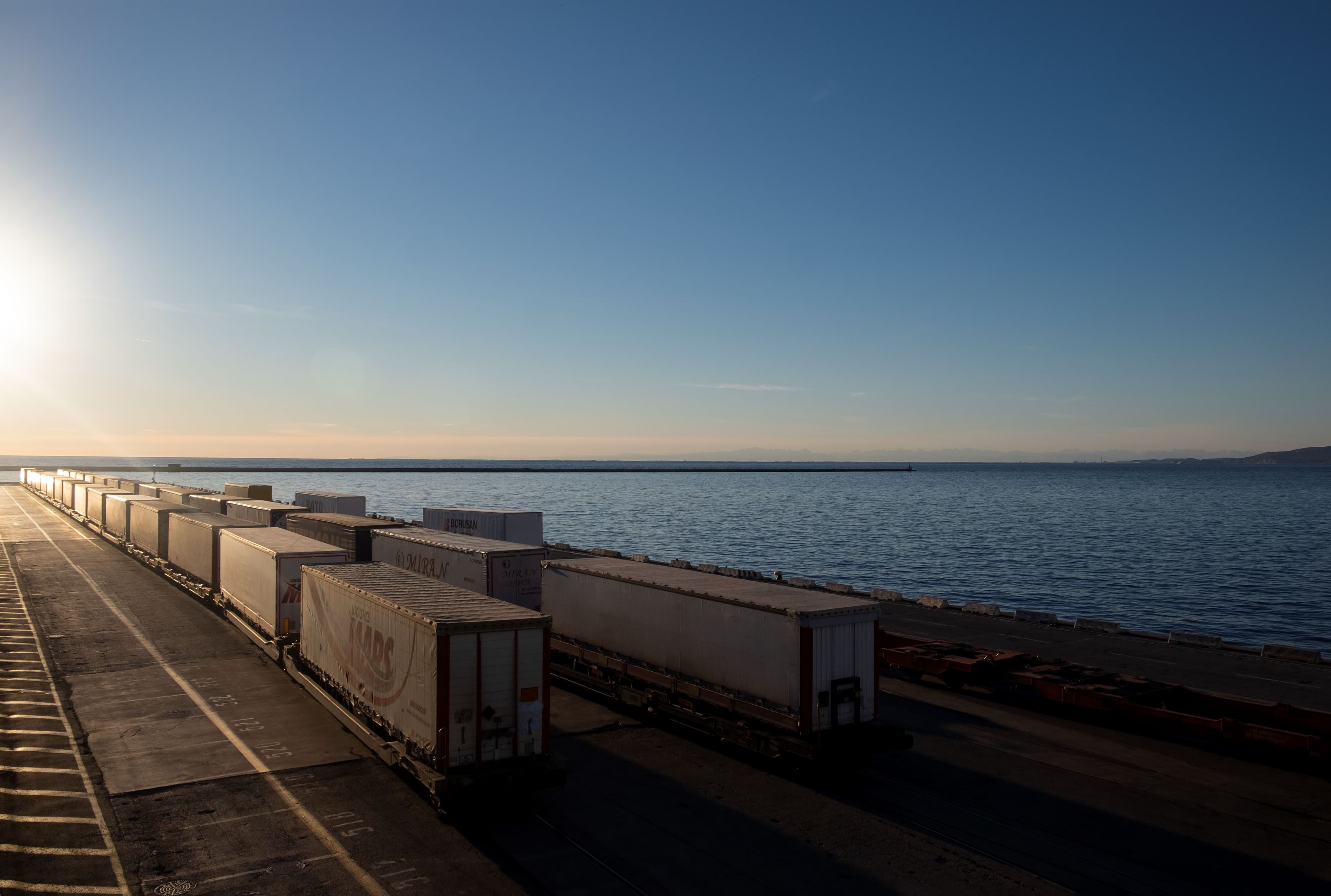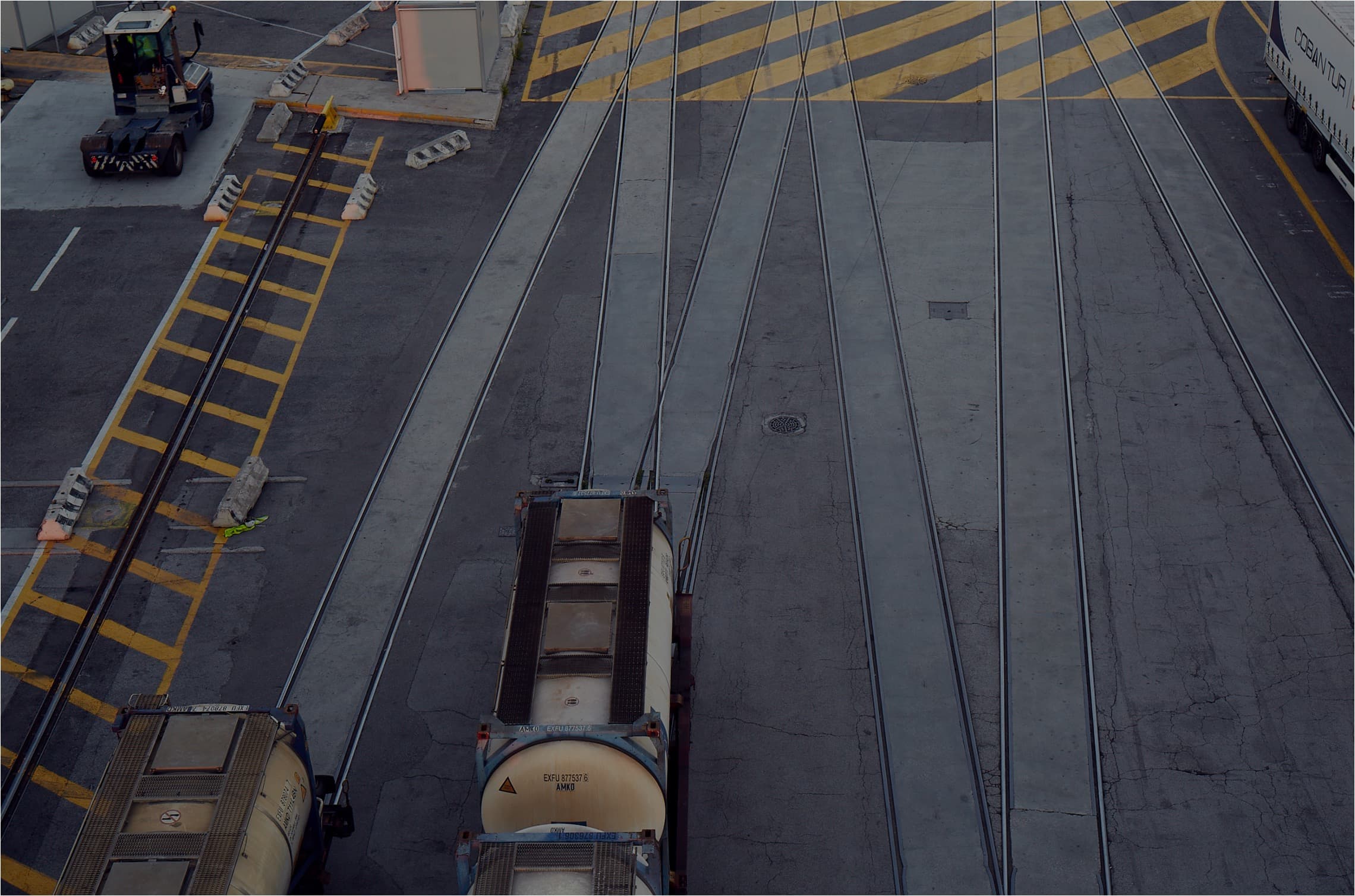A holistic approach
It might sound counter-intuitive, given the scale of the task; but decarbonisation has to start with doing less. Finding an alternative to diesel is crucial, yes - but we know that if we simply replace the diesel in our vessels with something cleaner, and change nothing else, this won’t be enough to ensure we meet our emissions targets, whilst remaining viable as a business. Our search for new fuels has to be part of a holistic approach to sustainability, requiring us to rethink how we operate, from the ground (or sea) up.
Our top priority is therefore always to save energy wherever possible, which we do through increased efficiency: sailing slower, planning better ferry routes, improving terminal equipment and practices, making use of wind and solar power and so on (click here to read more about some of the specific ways we are making energy efficiencies right across the organisation).
Cost comparison
After that, we analyse comparative abatement costs for different propulsion solutions, in order to work out which could be the most cost-effective. The calculations are complicated, and far-reaching; we strive to look at things from every angle. Will we need to order new vessels? Batteries? Do we have all the infrastructure? How will the fuel be produced and what will it cost? What about the impact of an inevitable initial drop in efficiency when moving to new technology? And then, from the other side, what exactly will the CO2 e savings be, given that production methods are still in development, and operational tests are still being conducted? How long will it take for those savings to kick in? Will it be fast enough? We also want to understand how our actions might affect emissions elsewhere: is there a risk we could be improving our own situation by shifting problems up- or downstream?
To the best of our understanding at the moment, the ideal for us remains to electrify - it’s the cheapest option for transition, taking everything into account. With today’s technology, electrification has a very limited range, but where it’s feasible for shipping, that’s what we’ll choose. For example, our shore power facilities at Vlaardingen and Gothenburg (plus Trieste and Ghent from 2025) enable suitable vessels to turn off their generators while in port, and we are committed to having two battery-electric ships in operation for cross-Channel routes by 2030.

What’s the alternative?
Efficiency and electrification, then, come first. But that still leaves us with considerable fuel needs to meet; and in doing so, difficult and potentially risky decisions to make. There is no perfect alternative as things stand, and there is more learning and new technologies to come; but it’s not overdramatising to say that time is running out for the fuels we use today, and so we need to be making active changes now. That’s why our ‘2+2+2 plan’ will see us launching two ammonia-fuelled Ro-Ro vessels in the North Sea, and two methanol-fuelled Ro-Pax passenger ferries, alongside the aforementioned electric vessels.
Going ahead with three different propulsion methods is a strategy we have chosen for several pragmatic reasons: primarily, it means that we can select the best available option for various types of route, according to contextual abatement cost calculations, and maintain the flexibility to move vessels to where there is demand, within those route types. It also keeps our options open, to a certain extent: we don’t know what will happen to prices, nor what technological leaps might be around the corner, and it’s important that we don’t find ourselves isolated within the industry, having thrown all our resources behind a solution that’s been overtaken by something more commercially and environmentally attractive.
Both ammonia and methanol are promising alternative fuels. Ammonia is already widely used (for example, in artificial fertilisers) and distributed, and it can be produced efficiently, with less green energy required than for, say, methanol. There are legitimate concerns around ammonia’s toxicity, however, which is why we are looking at it for freight only. We are confident that we can make an ammonia-fuelled vessel a safe environment for crews, through education, training and putting the appropriate technical solutions and procedures in place, but it’s harder to mitigate risks when transporting members of the public.
The other major issue with ammonia is its lack of technical maturity as a marine fuel. Methanol, on the other hand, is ready to go; it’s already being used in shipping and there are established procedures in place to deal with most safety concerns. However, green methanol is currently scarce and expensive. Demand is definitely on the increase, both within the shipping sector and beyond it, but while this could be good news in the long term, it may mean inflated prices while production catches up. We must plan for a future where we can sail on a fuel that is reasonably priced; at the moment, it’s difficult to say whether green ammonia or green methanol will be the cheaper option.
Future fuels
So, this is where we are right now; but our research and development work doesn’t stop with 2+2+2. Some of the other areas we are exploring include:
Biofuels While our more ambitious e-fuel projects are established, biofuels are one way in which we can already accommodate some customers' emissions reduction requirements, as well as manage EU compliance. Our priority here is to ensure that these fuels come from non-edible feedstocks, so we aren’t competing with food production.
Blue fuels As another transition option, blue fuels have the advantage of cheapness and scalability; but for us, the risk of methane leaks from the extraction of natural gas and the fact that this would be supporting the fossil industry to continue its operation is problematic. However, we are pushing for heavier regulation, and individual assessment of projects, which could potentially enable us to incorporate blue fuels into our strategy.
Hydrogen Hydrogen is a promising maritime fuel, being both energy-dense and potentially cost-effective, but it is tricky to store, and whether it’s feasible depends heavily on the characteristics of individual vessels and routes.
Nuclear energy Modern, small modular reactors (SMRs) offer a zero-emission, high-energy solution with exciting potential to deliver electricity where the infrastructure for battery charging is not available, and potentially transform long-haul shipping, but nuclear power comes with regulatory and public acceptance hurdles that can’t be ignored.
Onwards
Overall, DFDS has already put considerable groundwork into the transition away from fossil fuels - and made measurable, practical progress. Staying conscious of the complexity surrounding our decision-making, the importance of collaboration across the industry, and the sheer amount we don’t yet know, we have evolved a strategy that enables us to act now, reducing our emissions in the short term while working to develop longer-term solutions that are as affordable as possible. We know that the cost of genuinely sustainable transport will always be higher than in a model that fails to account for a global carbon budget, but we are determined to ensure it doesn’t become more costly than it needs to be; because after all, if we achieve net-zero without bringing customers and partners with us on the journey… what’s the point?







